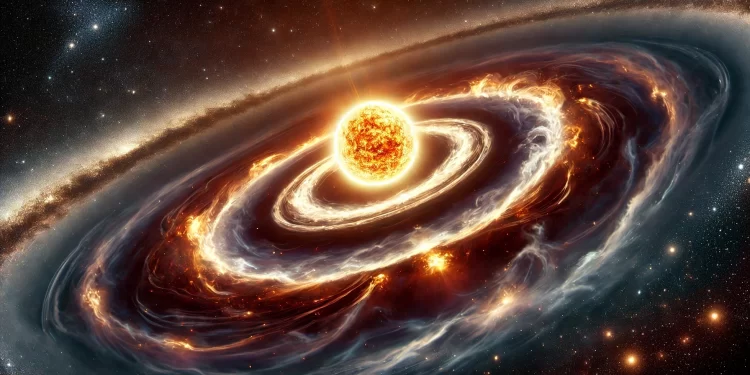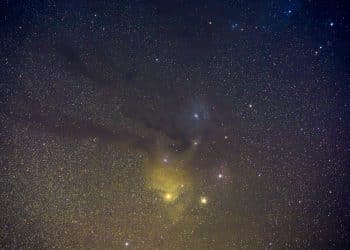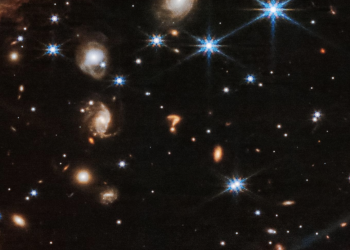In the vast expanse of the universe, more than 3,000 stars are born every second, many surrounded by swirling clouds of gas and dust known as protoplanetary disks, the very places where planets like ours begin to form. Yet, despite their crucial role in planetary formation, the exact processes that govern the evolution of these disks have long puzzled scientists—until now. A team of astronomers led by researchers from the University of Arizona has made groundbreaking discoveries using NASA’s James Webb Space Telescope (JWST), shedding light on the forces that shape these disks and, by extension, the planets that emerge from them.
Unlocking the Secrets of Disk Winds
One of the most intriguing findings from this study is the detection of disk winds—powerful streams of gas propelled outward from these planet-forming disks by magnetic fields. These winds are crucial for understanding how gas and dust in the disk eventually coalesce to form stars and planets. According to lead researcher Ilaria Pascucci, a professor at the Lunar and Planetary Laboratory at the University of Arizona, this process—known as accretion—is central to a star’s growth.
“Stars grow by pulling in material from the surrounding disk, but for this to happen, the gas has to lose angular momentum, and disk winds are one of the mechanisms that make this possible,” Pascucci explains. Without these winds to carry away the angular momentum, the gas would remain in orbit, never falling onto the star to fuel its growth.
Disk Winds and Magnetic Fields
While disk winds are crucial for accretion, they are not the only forces at play. In the inner regions of the disk, powerful magnetic fields generate what are known as X-winds, which rapidly expel material outward. Further from the star, the outer parts of the disk are eroded by intense starlight, creating much slower-moving thermal winds. “Understanding these different types of winds requires incredibly detailed observations, and that’s where the James Webb Space Telescope comes in,” says Tracy Beck from NASA’s Space Telescope Science Institute, a co-author of the study. Thanks to the JWST’s remarkable sensitivity, the team could distinguish between these different types of winds and map their structure with unprecedented precision.
A Glimpse into the Formation of Planetary Systems
For this study, the team selected four protoplanetary disk systems, all of which appear edge-on from Earth’s perspective. This alignment allowed the researchers to observe these winds more clearly, as the disks blocked out some of the blinding light from the central stars. Using JWST’s high-tech detectors, they were able to trace the winds’ intricate layers, revealing a three-dimensional structure. In each system, the team identified a central jet surrounded by layers of winds flowing from different parts of the disk, resembling the layers of an onion.
One of the most striking findings was the discovery of a central gap or hole in each wind structure, formed by molecular winds blowing through the disk. This gap is a vital clue to how stars accumulate mass and grow over time.
The Future of Disk Wind Studies
While these findings mark a significant leap in our understanding of star and planet formation, they are just the beginning. Pascucci and her team plan to expand their research to study more protoplanetary disks, hoping to determine how common these wind structures are throughout the universe. “With just four systems, it’s hard to draw broad conclusions,” Pascucci notes. “We need a larger sample to see how these winds change as stars evolve and planets begin to form.”
The discoveries made by the JWST not only bring us closer to understanding the forces that shape planetary systems, but they also offer a rare glimpse into the past—perhaps even into the formation of our own solar system billions of years ago.











